
News
Best Counter-UAV Methods
Guide to the best anti-drone technology. Drone defence and drone detection methods include DJI AeroScope, anti-drone guns, and jamming. ... Read More

Anti-drone technology has become a hot industry topic.
High-profile incidents such as the alleged UAS attack at Gatwick Airport in December 2018 has placed drone defence firmly on the agenda.
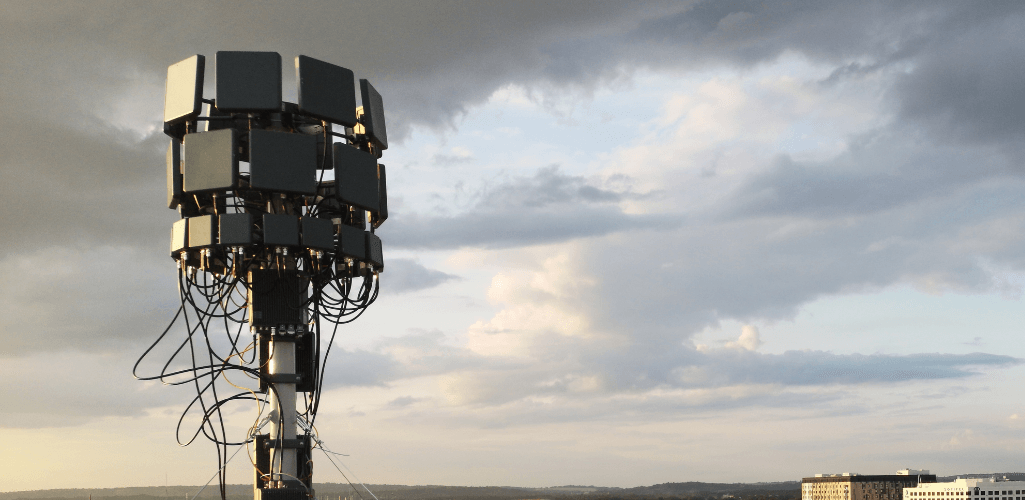
In recent years, counter-UAV solutions have made their way to market to help in the fight against rogue unmanned aircraft.
But which method is best? In this blog, we will take a look at the various anti-drone systems available and the pros and cons of integrating them into a drone defence strategy.
Drone Defence: Detection And Countermeasures
Before delving into the types of counter-UAS methods, it's important to provide a breakdown of the differences between drone monitoring equipment and drone countermeasures.
Drone monitoring equipment helps in the role of drone detection and includes RF analysers, radar, acoustic and cameras.

Some of these drone detectors are passive (looking/listening), while others are active (sending out signals and analysing what comes back).
These technologies can help prepare for an efficient response to a drone attack or a rogue UAV entering your airspace; after all, the first line of defence against a UAS threat is early detection and identification.
Some drone detection technologies such as DJI AeroScope, are able to track and identify drones in real-time, obtaining key information such as the drone's serial number, make and model, location, home position, and pilot position (if a GPS-enabled device is being used).
Having detected the drone, the next step is to stop it in-flight.
This can include firing a net from an anti-drone gun, using a laser to shoot the UAS out of the sky, or jamming.
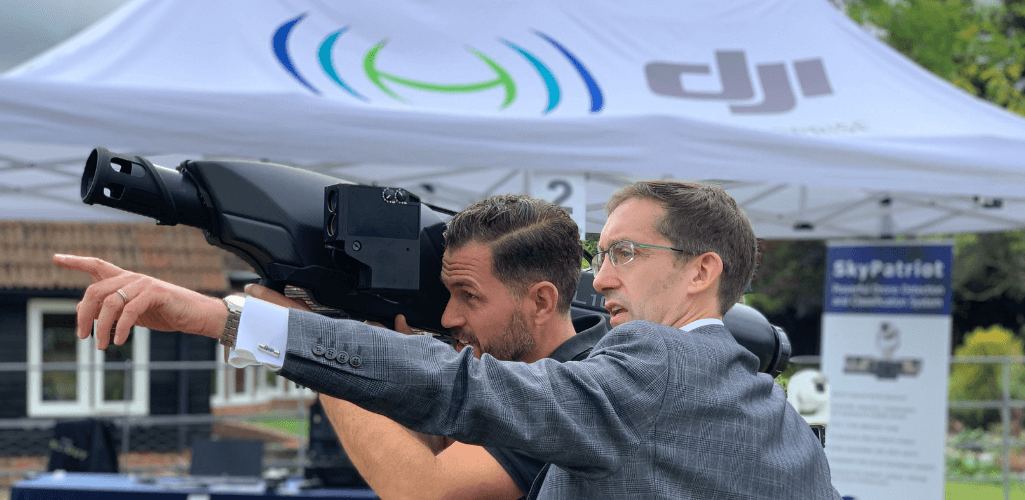
In essence, a comprehensive drone defence solution is a multi-step process, made up of drone detection and subsequent countermeasures. It's difficult to have one without the other.
Drone Detector: How To Detect A Drone In The Sky
Here's a breakdown of some of the best solutions to detect a drone:
Radio Frequency (RF) Drone Detector
RF analysers scan the airspace for the specific band of frequencies most drones operate within, typically 2.4 and 5.8 GHz.
The aim of RF analysers is to detect a communication link between the drone and the controller/pilot.
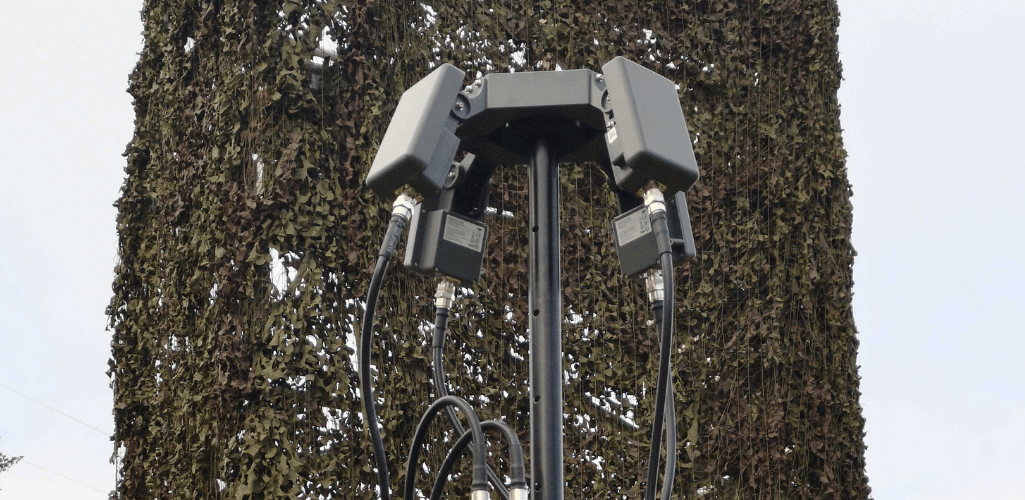
Some systems are able to identify the more common drone makes and models, and some can even identify the MAC addresses of the drone and controller.
Advantages: Successful at detecting and intercepting signals and locating drones; Low cost; Passive; Systems like DJI AeroScope provide real-time tracking and key Remote ID details.
Disadvantages: Prone to signal interference; Unable to detect higher/lower frequencies.
Drone Detector Radar
Radars look for drones by scanning a section of the airspace.
The system scans for radar signatures emitted from a UAS to identify the presence of a drone, measuring the direction and distance (position).
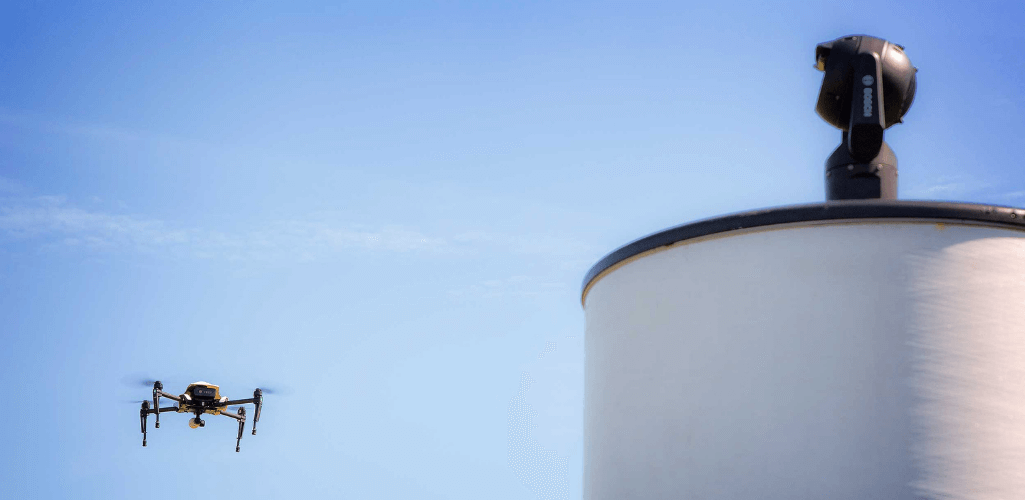
Some advanced radar systems offer 360-degree coverage, fast-tracking and fully-automatic drone classification and flight-path monitoring.
Radar can identify drones regardless of the radio frequency transmission and this technology is particularly accurate at detecting large to medium-sized drones. However, it isn't quite as reliable for alerting teams to smaller UAS.
Advantages: Highly accurate at detecting large/medium-sized drones; Consistent tracking; Not hindered by visual conditions, such as fog.
Disadvantages: Less effective for smaller drones; Most radar systems do not distinguish between birds and drones; Need transmission licence/frequency check to prevent interference.
Acoustic Drone Detection Systems
Using a microphone or a microphone array, acoustic drone detection systems detect sounds made by a drone and calculate its direction.
The technology matches the sound produced by a drone's motor to a specific sound within a library of sounds created by a UAS.
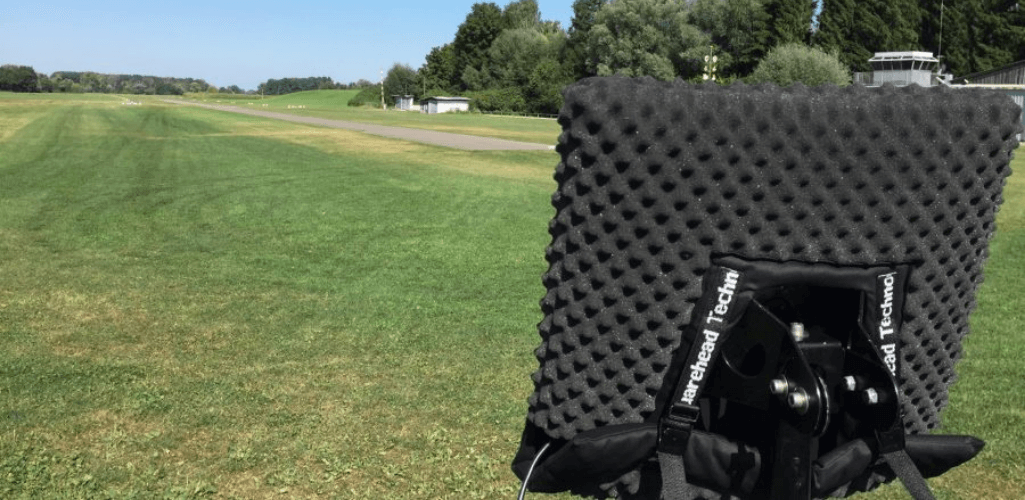
Acoustic sensor units are able to establish a bearing and elevation to the target in real-time using advanced digital-signal processing.
Advantages: Medium cost; Detects the buzzing sound waves of drones/UAS.
Disadvantages: Very short range; Hindered by noise interference; Can be 'deaf' if drone sounds are not in its library.
Cameras - Electro-optical (EO)/Infrared (IR)/Optical
Cameras are another drone-detection technique, capturing the movement of UAVs, either using appearance-based, motion-based or hybrid methods.
This form of drone detection can include daylight cameras or optical sensors, such as infrared/thermal and electro-optical.
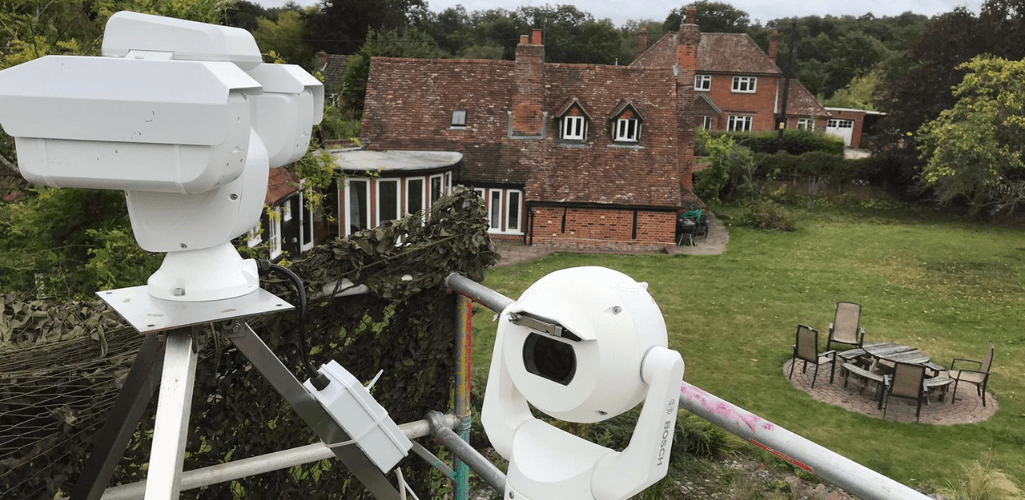
EO technology detects drones within the airspace based on a visual signature, while IR identifies a drone based on its heat signature, with the main heat source emitted from the drone’s batteries.
Advantages: Optical cameras have good resolution capture, and this image/footage can be used for evidence;
Disadvantages: EO can only operate during the daytime; EO can confuse a bird/plane; Both EO and IR must have direct line of sight of a drone; Certain cameras can have high false alarm rates; Optical cameras are difficult to use for detection.
Anti Drone Technology: Counter-drone Measures
Once a drone has been detected, the next stage is to disrupt it, especially if it is a rogue UAS heading towards an airport or other critical infrastructure.
Drone counter-measures aim to physically destroy the drone; neutralise the drone; or take control of it.
There are several ways of doing this, but please note that current regulations in most countries do not allow the use of any of these technologies for neutralising drones.
However, exceptions are sometimes made for military or law enforcement agencies.
Drone Signal Jammer
RF and GNSS drone jamming is designed to disrupt the radio frequency or satellite communication links.
The aim is to blast electromagnetic noise at a power level high enough to drown out any effective communication between the drone and its pilot.
When a drone is hit with a jammer’s signal, the drone usually returns back to its origin point (unless GPS is also jammed), giving the jammer user the option to track the drone back to the pilot.
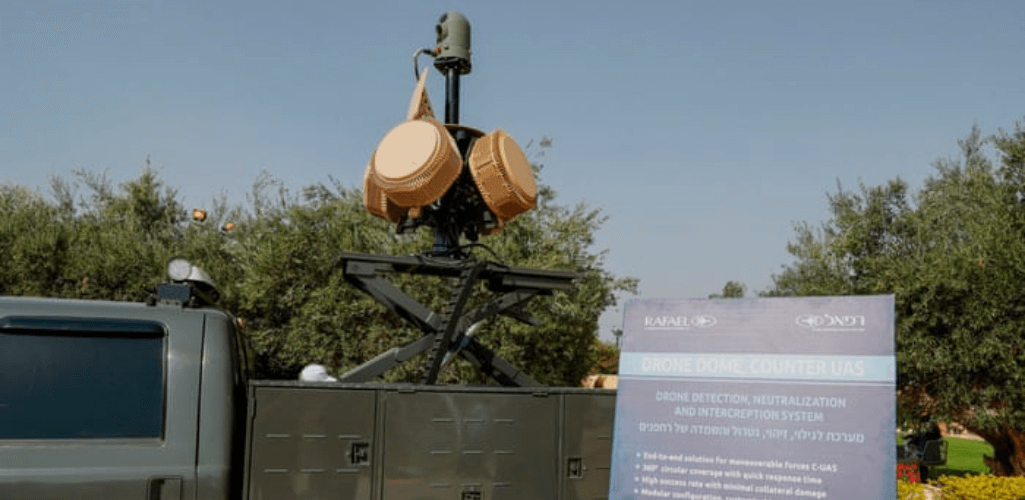
Sometimes the drones might even perform a controlled vertical descent and land on the spot intact. Landing on the spot is also the general response from drones when both RF and GPS are jammed at the same time.
Disrupting the satellite link interrupts the drone's navigation and can cause it to hover in place.
However, jamming can also cause a drone to fall uncontrolled to the ground, or fly off in a random, uncontrolled direction.
Jamming systems can be static, mobile, or handheld.
Hand-held jamming C-UAS systems are simple and easy to operate. Many hand-held C-UAS systems are connected to a rifle platform enabling an operator of the system the ability to aim at a specific target while transmitting the jamming signals.
Advantages: Medium cost; Non-kinetic neutralisation; Landing the drone means it can be recovered safely; Returning the drone back to home can assist with identifying the operator.
Disadvantages: Short range; Can affect (and jam) other radio communications; Can result in unpredictable drone behaviour; Could unintentionally send the drone to its target.
Drone Spoofing
Spoofing a drone is the act of a third party taking over the aircraft remotely by hijacking satellite communications links and disrupting a UAS'navigational capabilities.
Instead of simply drowning out satellite signals with noise, spoofing is the act of transmitting false signals that imitate the true satellite system signals received by a GNSS receiver, which causes it to receive false position and timing data.

These counterfeit GPS signals disrupt the communications links between a drone and its controller. In essence, this method confuses the drone, thinking the spoof signal is correct, when it isn't.
When done correctly, the spoofer can:
Take control of the drone and direct the flight, which includes flying it to a safe zone;
Download data from the drone or view its camera feed.
Advantages: Medium cost; Get control of drone and move to a designated area; Non-kinetic neutralisation.
Disadvantages: Risk affecting every other GNSS-using device in the vicinity; Different drones can react differently; Short range.
Anti-drone Gun And Nets
The term Drone Catcher is a C-UAS technology involving the use of nets that can be deployed in various ways:
Anti-drone Gun: Traditional firearm platform or remotely from a shoulder-mounted weapon resembling a rocket launcher;
Attack Drone: The attack drone fires a net to capture the targeted drone.
An anti-drone net entangles the drone and its motors, leaving it paralysed.
The trapped drone then falls from the sky, or is caught by another drone.

An anti-drone gun can be fired manually or autonomously, depending on the system.
Advantages: Physically captures drone – good for forensics and prosecution, Ground-launched net cannons are semi-automatic with high accuracy, Drone deployed nets have long range: Low risk of collateral damage.
Disadvantages: Kinetic solution could result in debris depending on parachute options; Drone deployed nets imprecise and long reload time; Ground-launched nets can have a short range.
Anti-drone Lasers
Anti-missile laser technology is another option to defeat a rogue drone, destroying the aircraft itself and/or its electronics.
This high-powered optical device produces an extremely focused beam of light, or a laser beam. It can disrupt a single UAS, and has shown some promise in defending against swarms of drones.
Two of the key advantages of deploying a laser is that it has extremely high accuracy - even over long distances - and has quickfire shooting and re-engagement capabilities.
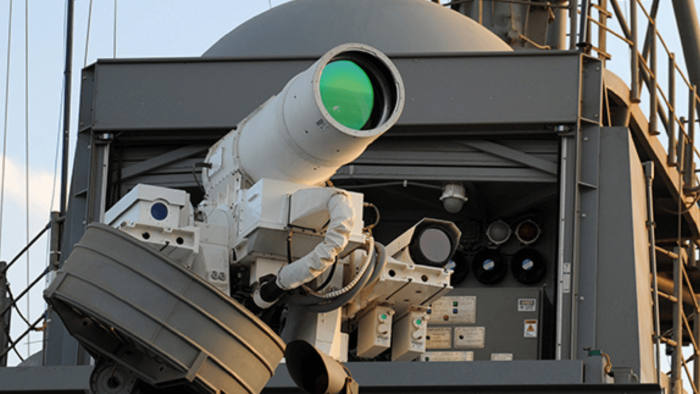
One study has shown that laser can destroy a target from 22 miles within 10-seconds, using an energy beam of 2, 5 or 10 KW.
Another benefit of laser technology as a counter-drone method is that, as it does not rely on the identification of UAS navigation systems, it can be effective against a modified UAS.
A laser system is portable. It can be mounted to a vehicle or a tripod, and can be assembled quickly.
Advantages: Rapid re-engagement capability; Multiple target engagements; Single-shot accuracy; Takes out drone.
Disadvantages: High cost; Risk of collateral damage.
Birds of Prey
Trained eagles can bring down hostile drones - police in The Netherlands have found.
The birds do this by latching on to the propellers with their talons, instantly disabling them.
This method takes advantages of an eagle's natural hunting prowess.
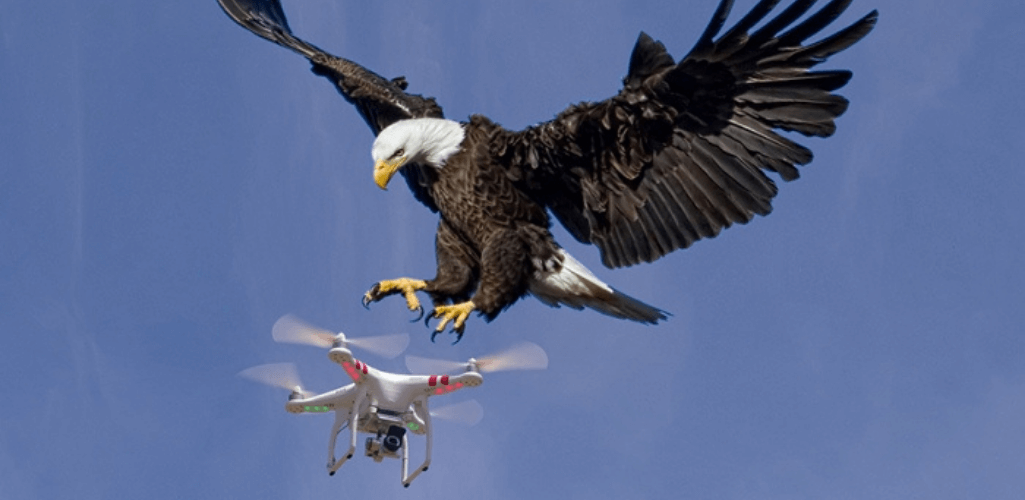
However, there are issues with this method.
Sometimes the eagles don't do what they are trained to do.
It can also be a time-consuming and labour-intensive process - involving many hours of training and maintaining the birds, and deploying human resources to the scene of an incident.
Advantages: Low cost; Natural defence method; Quick, accurate, and controlled capture of the drone.
Disadvantages: Relying on nature - the eagle might not perform when needed; Takes many hours of training; Difficult to scale due to the limited number of birds available.
Counter UAV - Layered Solution
As this blog shows, a wide range of counter-UAS solutions are available, to both detect and stop a rogue drone.
However, it also highlights that, individually, each method has its limitations.
Therefore, for a comprehensive drone defence strategy, a layered solution encompassing a mix of the above, offers the best solution.
As a drone defence specialist, HELIGUY.com™ has an established partnership network to provide an all-encompassing strategy.
DJI AeroScope
HELIGUY.com™'s solution centres on DJI AeroScope; a passive RF advanced-warning system which can remotely identify airborne drones.
AeroScope uses the existing communications link between the drone and its remote controller to quickly collect information about the drone, such as:
Drone Serial Number
Make and Model
Precise Drone Location
Drone Speed
Drone Direction
Home Position
Pilot Position (if pilot is using a GPS enabled device)
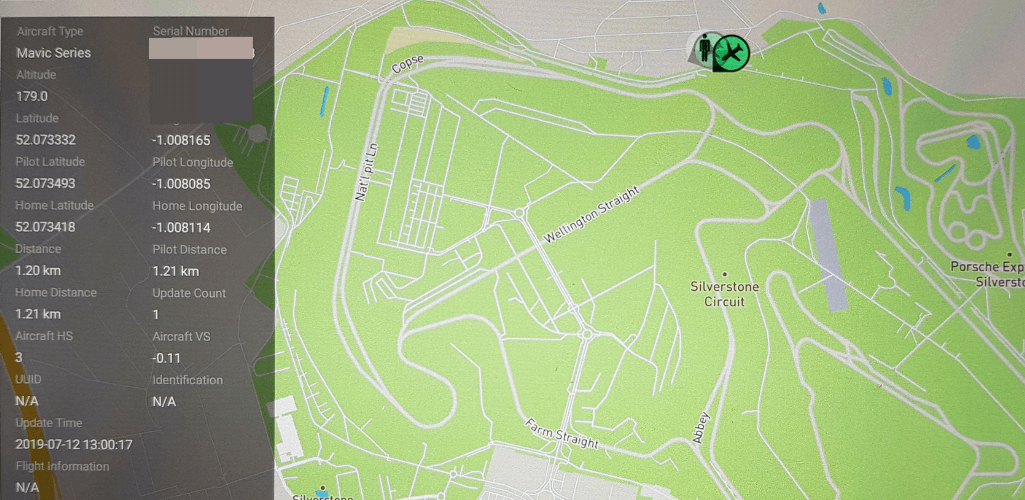
AeroScope receives the drone's telemetry information in real-time. This allows authorities to identify and track those drones, and take action if any of them raise concerns.
AeroScope comes in two formats:
Portable
Stationary (G8 or G16)
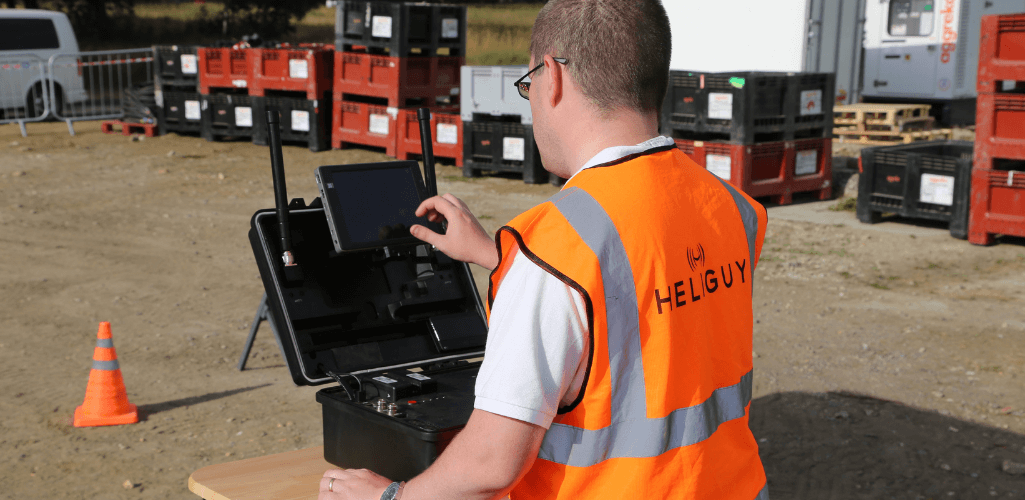

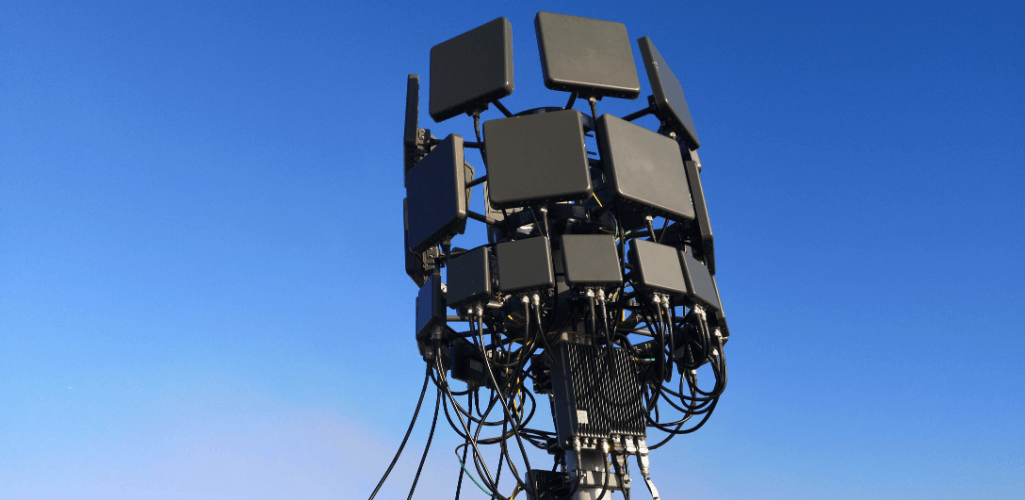
DJI AeroScope is a powerful solution to place at the heart of a drone defence strategy.
However, as it only detects DJI drones (which is nothing to be scoffed at, as DJI drones comprise over two-thirds of the civilian drone market), it is important to plug the gaps.
And this is where a multi-sensor, layered solution comes in, integrating DJI AeroScope with other counter-UAS technologies.
HELIGUY.com™ works with partners such as BT, Advanced Protection Systems (aps), Operational Solutions Ltd (OSL), Rinicom, Altitude Angel, and OpenWorks Engineering to provide a robust package.
Our multi-layered solution can include an anti-drone gun, a second RF detector, radar/3D radar, and an optical camera with up to four Detection Modules each providing 90° coverage and a powerful 360° PTZ camera to zoom in to the detected object to analyse its signature. A sophisticated interface brings these systems together.
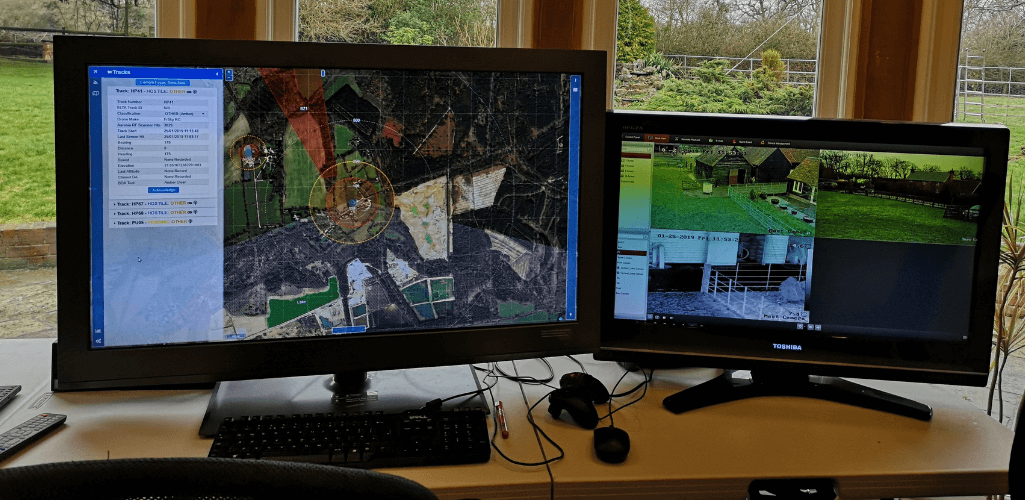
HELIGUY.com™ has provided drone defence, consultancy, and continued support to airports, sporting events, public safety crews, prions, and energy companies, including at Gatwick Airport and the British Grand Prix.
As a global drone-defence provider, and based in the UK and the USA, HELIGUY.com™ can provide solutions across the globe.
For more information and to find out how HELIGUY.com™ can support your drone defence requirements, contact us by email or telephone.
